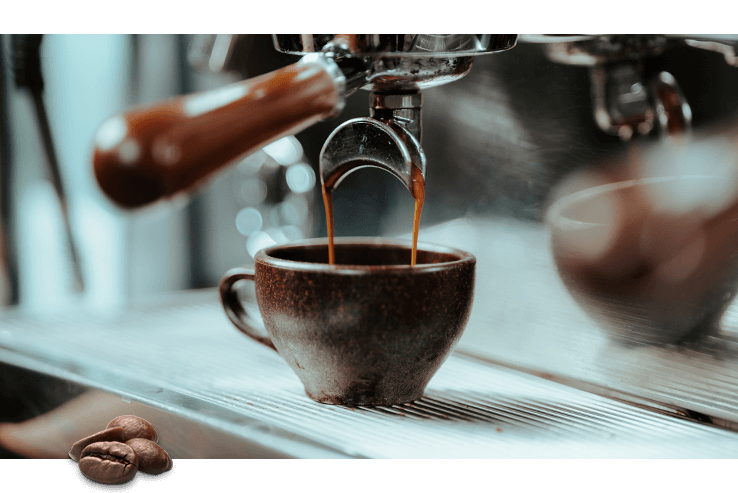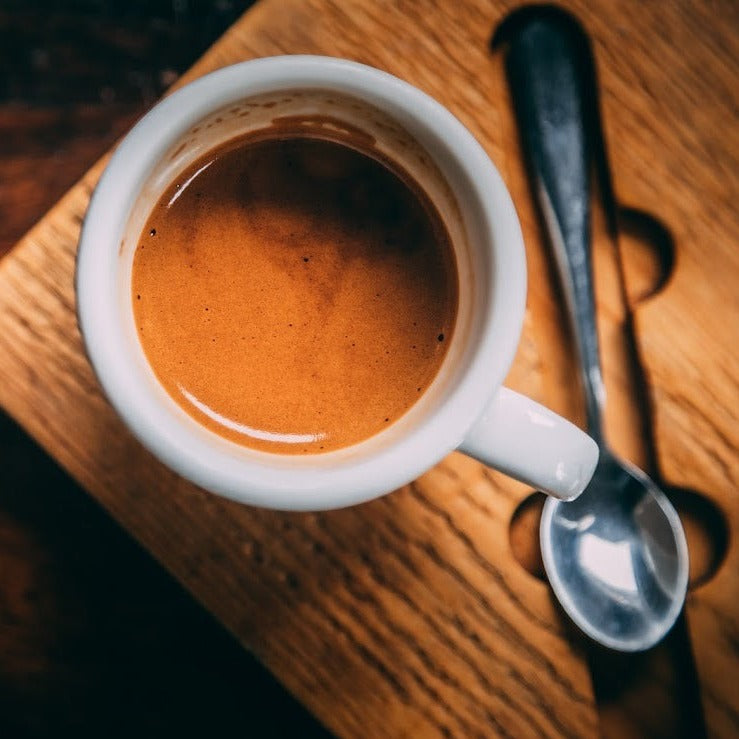Coffee Beans Uncovered: Discovering the Secrets of Coffee and Blended Coffee Beans
When you believe about coffee, what comes to mind? Is it the rich fragrance of espresso or the intricacy of a well-crafted mix? Comprehending the subtleties of coffee beans can change your experience.
The Origins of Espresso: A Historical Point Of View
Although coffee is now a staple in coffee society worldwide, its beginnings map back to the very early 20th century in Italy. In 1901, Luigi Bezzera patented the very first coffee machine, intending to brew coffee faster than traditional techniques.
Recognizing Coffee Beans: Qualities and varieties
When you assume concerning coffee, it's important to recognize the different bean selections and their unique tastes. Each type brings a distinct character to your mug, affected by aspects like roast degrees. Comprehending these components can raise your coffee experience considerably.
Espresso Bean Varieties
As you check out the globe of espresso, you'll rapidly find that not all beans are created equal; each variety brings its own distinct tastes and qualities to your mug. Arabica beans are recognized for their smooth, nuanced flavors and reduced caffeine web content, making them a favored among coffee lovers. Each variety uses something different, so exploring will assist you find your perfect espresso.
Flavor Accounts Explained
Recognizing the flavor accounts of different espresso beans can elevate your coffee experience. Each bean selection offers distinct qualities that affect mouthfeel, aroma, and taste. Arabica beans frequently present a sweeter, extra complex taste with tips of fruit and flower notes, while Robusta beans have a tendency to be bolder, with nutty and earthy touches.
When you check out single-origin beans, you might uncover distinctive regional tastes-- Main American beans might be citrusy and intense, whereas Italian blends often supply abundant, chocolatey notes.
Roast Levels Effect
Roast degrees play an important role in shaping the flavor and scent of coffee beans, influencing your total coffee experience. Comprehending these roast levels helps you pick the coffee that fits your preference choices. Experimenting with different roasts can lead to wonderful discoveries, boosting your admiration for coffee.
The Art of Blending: What Makes Blended Coffee Special
What makes mixed coffee so fascinating? It's everything about the art of integrating beans from various beginnings, roast degrees, and taste profiles. You're not just blending; you're producing an unified equilibrium that highlights the toughness of each bean when you blend. You can try out various mixes to boost body, sweetness, and level of acidity, leading to a brew that's richer and more intricate than a single-origin coffee.
Blending likewise allows you to deal with varied taste preferences. You can craft a mix that's mellow and smooth or one that's bold and durable, relying on your target market. And also, blending can help preserve consistency, supplying a trustworthy flavor experience no matter seasonal variants in beans. So, whether you're a home or a barista maker, mastering the art of mixing opens up a globe of creativity and flavor possibilities, making your coffee experience genuinely distinct - SOE.
Flavor Profiles: Sampling Notes of Coffee vs. Blended Coffee
Combined coffee offers a world of taste opportunities, but when it comes to coffee, you're looking at an extra focused experience. Espresso generally showcases bold, abundant tastes with a thicker mouthfeel.
On the other hand, combined coffee presents an intricate tapestry of tastes. You can explore a variety of tasting notes, from nutty and wonderful to flower and fruity. Each blend can provide something unique, frequently incorporating beans from various regions to develop a balanced profile.
While coffee delivers a punch, blended coffee invites you to relish the nuances. Whether you prefer the durable stamina of espresso or the complex flavors of combined coffee, each cup tells its own tale, waiting for you to find.
Brewing Techniques: Perfecting Your Espresso Shot
To attain the excellent coffee shot, recognizing the brewing methods is vital, as also minor changes can greatly affect the flavor and high quality. Begin by utilizing fresh, top quality coffee beans; grind them prior to developing for optimum taste. Go for a great grind, concerning the uniformity of table salt, to assure ideal removal.
Next, take note of your water temperature; it needs to be in between 195 ° F to 205 ° F. Too too cool or warm can destroy your shot. Use regarding 18-20 grams of coffee for a double shot, and tamp it equally with strong stress to create an uniform puck.
A longer removal can lead to resentment, while as well brief can result in sour flavors. Practice these methods continually, and you'll improve your abilities, attaining that abundant, full-bodied coffee shot you crave.
The Role of Roast Degrees in Espresso and Blended Coffee
After grasping the brewing techniques for coffee, it's time to contemplate how roast levels affect the flavor profile of your coffee. Light roasts tend to highlight the coffee's origin, offering brilliant acidity and fruity notes, while tool roasts equilibrium acidity and sweetness, developing an all-around taste.

Checking Out Sustainability: Honest Sourcing of Coffee Beans
When you pick coffee, you're not just picking a taste; you're deciding about the influence on farmers and the environment. Understanding Fair Profession techniques, natural farming methods, and qualification requirements can assist you support sustainable coffee sourcing. Let's check out just how these aspects contribute to an extra moral coffee experience.
Fair Profession Practices
Fair Trade methods play a crucial role in ensuring that coffee beans are sourced ethically and sustainably. When you pick Fair Profession coffee, you support farmers that obtain reasonable earnings and job in secure conditions. By deciding for Fair Trade brand names, you're not simply taking pleasure in a rich mug of coffee; you're making a favorable influence on the lives of those that grow it.
Organic Farming Methods
As you explore the globe of honest coffee sourcing, natural farming approaches emerge as a crucial element of sustainability. By picking organic coffee, you support methods that focus on dirt health, biodiversity, and all-natural communities. Farmers stay clear of synthetic pesticides and plant foods, relying instead on all-natural compost and plant turning to boost soil fertility. This not only protects the setting but likewise boosts the quality of the coffee you appreciate. Organic farming encourages local wildlife and promotes a well balanced ecosystem, reducing the opportunities of illness and pests. In addition, it frequently brings about stronger, healthier coffee plants, leading to richer tastes in your mug. You're making an aware option that benefits both the world and your taste buds. when you opt for organic coffee.
Certification Standards Explained
Recognizing certification requirements is necessary for anyone thinking about morally sourced coffee. These requirements, such as Fair Profession, Jungle Alliance, and USDA Organic, warranty that coffee is grown under lasting methods. You sustain farmers that stick to honest labor methods and environmental protection. when you select certified coffee.
Fair Profession qualification concentrates on supplying fair wages and working problems, while Jungle Alliance highlights biodiversity and SOE environment conservation. Following time you're at your regional coffee shop or grocery shop, look for these tags, and feel excellent understanding your coffee purchase favorably influences neighborhoods and the atmosphere.
Regularly Asked Questions


Exactly How Does Elevation Affect the Growth of Coffee Beans?
Altitude effects coffee bean development by influencing temperature and environment. Greater elevations often produce denser beans with even more complex tastes, while lower elevations can result in faster development however much less delicious results. You'll taste the distinction!
What's the Difference Between Arabica and Robusta Beans?
Arabica beans are sweeter and much more intricate, while Robusta beans have a stronger, harsher taste with higher caffeine web content. You'll find Arabica favored for specialty coffees, whereas Robusta's usually used in immediate coffee and espresso blends.
Can Coffee Beans Spoil or Lose Taste With Time?
Yes, coffee beans can go bad and lose flavor with time. They'll end up being stale if you keep them improperly or keep them as well long. Constantly maintain your beans in a closed container far from light and wetness.
What Are the Wellness Advantages of Drinking Espresso?
Consuming alcohol coffee increases your power, improves psychological quality, and may reduce the danger of specific diseases. It's rich in anti-oxidants, supports metabolic process, and can improve mood, making it a valuable selection for your daily routine.
How Does Water High Quality Effect Espresso Removal?
Water top quality substantially affects coffee removal. It affects the solubility of flavors and oils, influencing preference and scent. Making use of filtered water can enhance your espresso, ensuring a satisfying and well balanced cup each time you make.
Coffee Beans Uncovered: Discovering the Tricks of Espresso and Blended Coffee Beans.
Comprehending the flavor profiles of various espresso beans can boost your coffee experience.Roast degrees play a necessary role in forming the flavor and scent of espresso beans, affecting your general coffee experience (SOE).Combined coffee provides a globe of flavor possibilities, yet when it comes to coffee, you're looking at an extra concentrated experience.After grasping the developing techniques for coffee, it's time to consider exactly how roast degrees influence the flavor profile of your coffee